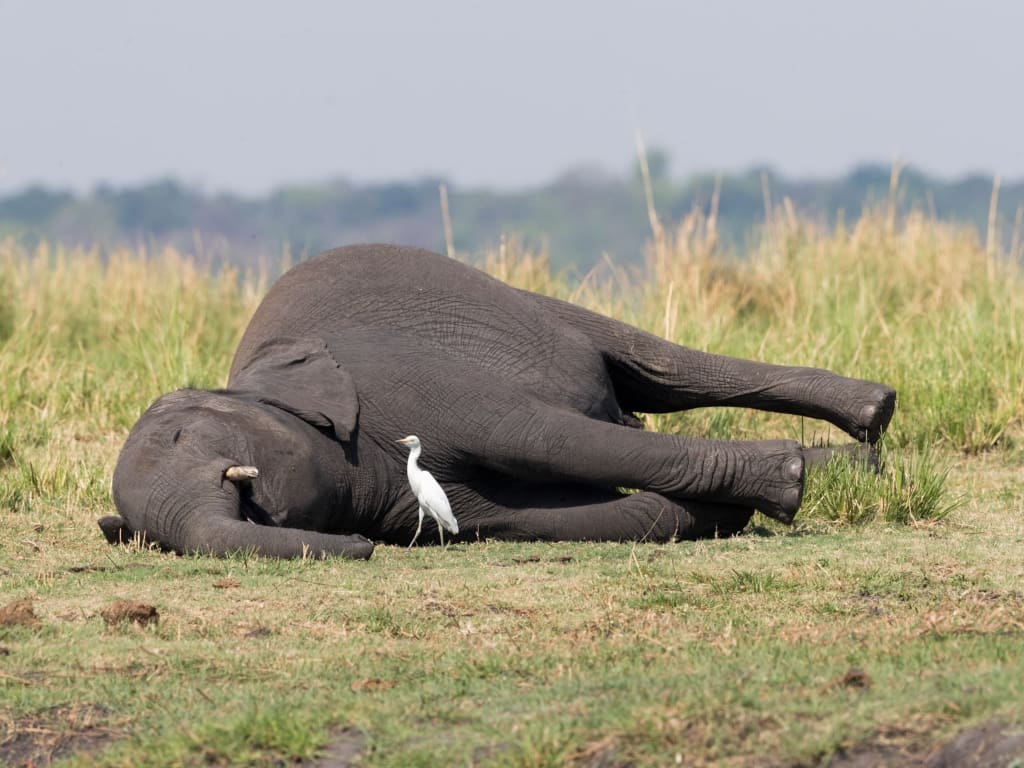A mysterious death of African elephant
Causative agent might be a micro organism

A lethal bacterium has been discovered in the bodies of six African savanna elephants that mysteriously died off in Zimbabwe in 2020. At the time, the carcasses of 35 African elephants (Loxodonta africana) had been determined scattered throughout the north of the country.
The micro organism might also provide an explanation for the current elephant die-off, as nicely as one in neighboring Botswana, researchers mentioned Oct. 25 in the journal Nature Communications.
From August to November 2020, 35 elephants in Zimbabwe died of mysterious causes. Just earlier than this, 350 African elephant carcasses had been determined scattered in Botswana. Because most of the carcasses had been close to watering holes, scientists at the start believed that the elephants ingested toxins produced via microscopic algae referred to as cyanobacteria, which have been current in the ingesting water. Another main concept was once a disastrous outbreak of a kind of micro organism known as Pasteurella multocida, which can infect human beings after they are bitten and scratched through wild or domesticated animals, such as cats and dogs. P. multocida is naturally current in the throats of healthful wild animals, however traumatic environmental conditions, such as excessive temperature and humidity, can also gas bacterial overgrowth that turns it into a lethal pathogen.
In 2015, P. multocida killed roughly 200,000 saiga antelopes (Saiga tatarica tatarica) in central Kazakhstan, wiping out 62% of their international populace in simply three weeks.
In the new study, scientists from the Victoria Falls Wildlife Trust, the Animal and Plant Health Agency UK, the University of Surrey and laboratories in South Africa carried out necropsies on 15 elephants in the Zimbabwe die-off. They observed excessive concentrations of the bacterium Bisgaard taxon 45, which is carefully associated to P. multocida, in the brain, liver and spleen of six of them. This bacterium is naturally determined in the throats of parrot species.
Across a couple of organs, the elephants additionally harbored lesions and hemorrhages indicative of a lethal shape of bacterial blood poisoning recognized as hemorrhagic septicemia.
This is the first time septicemia by way of a Pasteurella species has been pronounced in African elephants.
"Failure to discover Bisgaard taxon forty five in samples from all 15 elephants was once probable due pattern fine and delays in testing," the find out about authors noted.
The new findings increase the odds that Bisgaard taxon forty five prompted the mass mortality match in Botswana, too. However, no one amassed samples from elephants in Botswana to verify the bacteria's position in these deaths.
That's due to the fact even getting to the samples was once a challenge.
"Identifying and then achieving the carcasses in time to acquire beneficial samples is one hassle we regularly face in this kind of work," find out about lead creator Dr. Chris Foggin, a natural world veterinarian at the Victoria Falls Wildlife Trust, stated in a statement.
The carcasses have been so massive that researchers wanted unique allows to transport samples, and that took time.
Scientists at the start approached 25 of the elephants in Zimbabwe, however by way of the time the scientists arrived, 10 of the elephants had been too decomposed to yield beneficial samples, in accordance to the study.
A aggregate of environmental elements and elephants' social shape may additionally have contributed to the bacteria's spread.
"Transmission of the micro organism is possible, particularly given the especially sociable nature of elephants and the hyperlink between this contamination and the stress related with severe climate activities such as drought, which may additionally make outbreaks greater likely," Dr. Falko Steinbach, head of the virology branch at the Animal and Plant Health Agency UK, stated in a statement.
While drought can also have pressured the elephants in Zimbabwe, poaching can also have been a key stressor in Botswana, the find out about authors wrote.
African elephants are listed as endangered on the IUCN Red List of Threatened Species, and their populace is declining basically due to ivory-related poaching. .
According to the study, the declining African elephant populace paired with unsure local weather conditions, places the populace below excessive stress in the future.
"Further lookup is wanted to research extra about the micro organism and its long-term implications for the African elephant populace and different wildlife," Steinbach said.
About the Creator
Enjoyed the story? Support the Creator.
Subscribe for free to receive all their stories in your feed. You could also pledge your support or give them a one-off tip, letting them know you appreciate their work.





Comments (2)
We are happy to know the fact.
Very nice